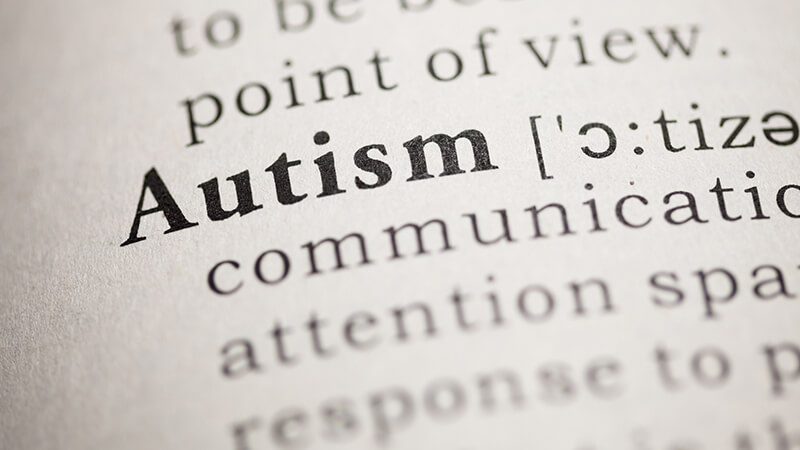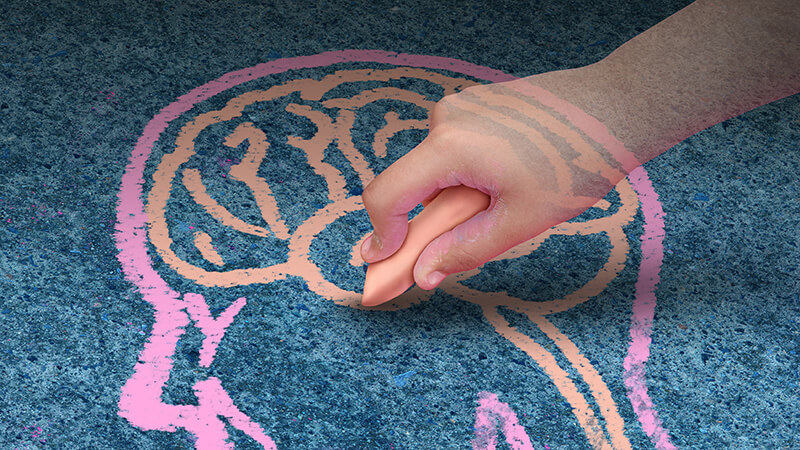One of the greatest challenges posed by autism is the fact that it is not a solitary disease with a consistent group of symptoms, but rather, a cluster or spectrum of interrelated physical and emotional disabilities, which fall under the heading of Pervasive Developmental Disorders (PDD). These spectrum disorders include PDD-NOS (Pervasive Developmental Disorder—Not Otherwise Specified), Aspergers Syndrome, Rett Syndrome, and Childhood Disintegrative Disorder.
An aggressive new approach to identifying and treating autism spectrum disorders—pioneered by Dr. Andrew Rubin, a clinical psychologist and clinical researcher—is offering renewed hope to patients and families facing the multiple challenges of this affliction. Today, Rubin’s innovative program, drawing on decades of intensive autism research and hands-on clinical experience is being adopted, with impressive results, in treatment programs across the country.
Dr. Rubin attended college at the University of Connecticut, New York University, and earned his Ph.D. in Clinical Psychology from the Illinois Institute of Technology’s Institute of Psychology. It was during Rubin’s subsequent clinical work at Rush Presbyterian Hospital in Chicago however, that he began to develop a path to more effective treatment of ASD and the co-morbid problems often associated with this unique class of disorders. These disease symptoms include elevated levels of anxiety, depression, poor frustration tolerance, extreme rigidity, poor social functioning, and an overall lack of independence.
As Rubin notes, confusion has accompanied autism since Leo Kanner first affixed the label to a strange complex of behavioral and developmental disorders, in 1943. While identifying many of the traits associated with autism according to current clinical definition, Kanner (and later, Bruno Bettelheim) erroneously ascribed the cause of childhood autism to withdrawn, neglectful or abusive mothers. It wasn’t until the 1960s and 70s that Dr. Bernard Rimland, whose own child suffered from the disorder, identified biological factors, rather than poor parenting, as the cause of autism. He went on to found the Autism Society of America and the Autism Research Institute to foster scientific study of the ailment.
Autism spectrum disorders can affect patients in three interrelated domains, each requiring specialized attention:
- Neurologic deficit affecting normal brain development
- Psychological aberrations involving cognitive, emotional, and behavioral development
- Socialization disorders affecting normal interactions with others
Though the study of autism has shown impressive progress since the earliest identification of the disorder, fundamental questions remain. Researchers still don’t know what causes autism, why it produces severely debilitating symptoms in some patients but not in others, or why it is four times more likely to occur among boys (about 1 in 70) than girls. Alarmingly, the incidence of autism has been rising over several decades, increasing annually by 10 to 17 percent. Whether this is due to more thorough screening or the result of as-yet-unidentified environmental factors likewise remains elusive.
For ASD patients functioning at higher cognitive levels, the social deficits produced by the disorder may present the most severe hindrance for those aspiring to an independent adulthood. Rubin stresses that for these patients, intensive refinement of social skills through weekly role-playing exercises, instruction of social skills, and daily management techniques, along with focused interactions with clinicians and fellow patients can often make the difference between supervised life in a group home and a fruitful and productive integration into society.
Recent empirical studies have demonstrated the effectiveness of therapy aimed at social skill acquisition. Such training in real-life settings, with coaching and reinforcement provided by clinicians, family, and peer group members, is a cornerstone of Rubin’s comprehensive approach to ASD. In one related study of 14-year-olds with Asperger syndrome for example, similar techniques (including role-playing exercises and directed recreation) were found to produce significant improvement in social, emotional, and communication skills, as rated by parents of these children. Improving the deficit in social skills is paramount, Rubin says, for the formation of healthy and productive relationships for individuals with ASD. Future vocational opportunities as well as a general sense of well-being and confidence are fostered, leading to improved mental and physical outcomes.
Dr. Rubin explains that the varied symptoms and conflicting therapeutic approaches to this unique matrix of illness have left families confused and often disheartened about where to seek the best possible care: “Many of the symptoms that individual doctors treat in this specific population,” he says, “are actually secondary to ASD. Without a comprehensive analysis and approach, the nuances of the disorder and the client’s individual treatment requirements simply fall through the cracks.”
In addition to his passion for improving the lives of patients with ASD, Rubin has been a longtime poker aficionado, a recreational habit he took up obsessively while completing a post-doctoral internship in clinical psychology at Tulane University in New Orleans. His finely honed skills netted him over a quarter million dollars at the 37th Annual World Series of Poker. This sudden windfall enabled Rubin to pursue a longstanding dream of establishing a comprehensive program devoted to an innovative approach to autism and associated cognitive disorders.
New Directions (www.NDFYA.com) —a flagship facility for the treatment of autism and the first of its kind in the country, was established in 2007 and now comprehensively treats approximately 50 clients annually. Clients live in their own apartments with corporate facilities also located inside the community. The model has been so effective, that healthcare providers and insurance companies are enthusiastically embracing it as an option offering markedly improved patient outcomes at substantially lower cost, compared with competing methodologies.
New Direction’s approach, which employs a coordinated multidisciplinary treatment model or CMT, integrates clinical, academic, vocational, and life management areas into a holistic effort. Rubin favors individualized treatments rooted in the latest scientific literature on ASD, integrating cognitive behavioral therapy, developmental theory, and neuropsychology.
Pat Maloy is Chief Executive Officer of Therapy Review Systems Inc., a company that conducts prior peer review studies on behalf of over 1 million clients seeking physical, occupational, and speech therapy services. “What we observe in Drew’s practice,” Maloy notes, “is an ideal environment where the patient’s services are coordinated and managed on a daily basis by a single case manager. Our experience is that this coordinated practice method fosters patient progress during treatment and produces optimal improvement outcomes.” The approach is in marked contrast to conventional treatment methodologies for ASD, in which a given child may be shuttled to 4 or more therapists in a week, with insufficient coordination and sharing of client information between caregivers.
“I’m excited about this new platform of treatment for young adults,” Rubin says, explaining that his focused, systematic approach to ASD is designed to mold around each specific client, targeting their problematic neuro-biologically related symptoms and behavioral anomalies and treating these in tandem. Skinnarian and cognitive behavioral targeting interventions are designed and implemented from the beginning of the treatment regimen, to effectively address the wide variety of symptoms that may appear.
For individuals with autism spectrum disorders, such symptoms often include problematic social interactions, anxiety disorders (including obsessive-compulsive disorder), attention deficit disorder, poor life management skills, and a lack of financial management skills, among other symptoms. “They don’t call it a spectrum for nothing,” jokes Dr. Rubin, adding that the diverse manifestations of the disease are often bewildering to the uninitiated. “This platform first comprehensively assesses, and then treats all of the unique symptoms that are associated with ASD.”
While much remains to be learned about the causes and treatment of ASD, recent research on many fronts, from neurophysiology to genetics, from behavioral psychology to medical imaging has given science a new window into this highly prevalent disorder, long shrouded in mystery. As Maloy stresses, a holistic, multidisciplinary interaction among caregivers is essential to successful therapy. “One thing that impresses me about Dr. Rubin,” he says, “is the high-quality network of professionals he is engaged with. In cases where patients may have unusual conditions or co-morbidities, he is able to draw on the varied expertise of fellow practitioners, using best practices and his coordinated care model to achieve optimal outcomes.”
As the many branches of ASD research continue to rapidly develop, it has become clear that the best hope for progress is rooted in a person-centered rather than system-centered approach—one keenly tailored to the practical needs of each individual.
Dr. Drew Rubin has held a variety of clinical, academic, and research appointments throughout his career in both hospitals and training institutions, including The University of Chicago Hospital, Department of Child Psychiatry; Rush-Presbyterian-St. Luke’s Medical Center; Tulane University Medical School, Department of Psychiatry and Neurology; Tulane-DePaul Behavioral Health Center; Louisiana State University Health Science Center; The Medical Center of Louisiana (Charity Hospital); Illinois Masonic Medical Center; and the Pain and Rehabilitation Clinic of Chicago (PRCC). Dr. Rubin has also served as the lead psychologist at the Unicorn Child Development Clinic at Nova Southeastern University’s Mailman Segal Institute for Early Childhood Studies.
Richard Harth
Science Writer for the Biodesign Institute
Arizona State University
2011




